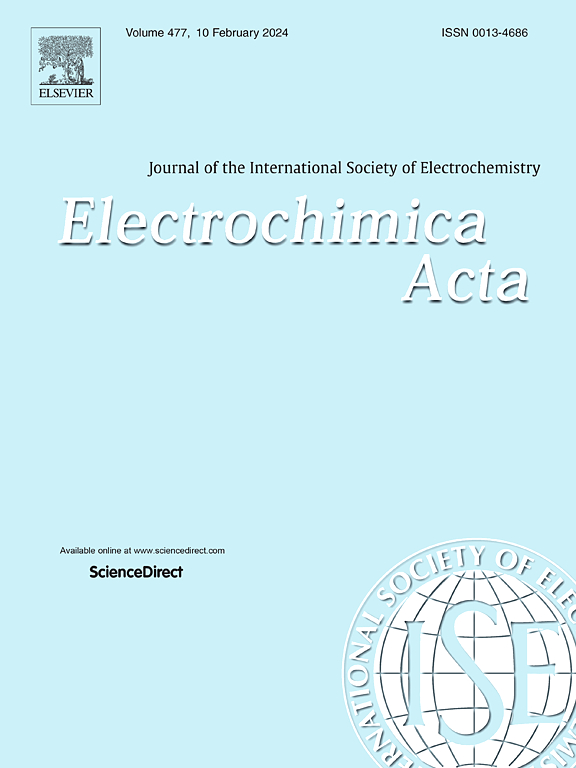Computational simulation of alternating current (AC) impedance of hardened cement mortar
IF 5.6
3区 材料科学
Q1 ELECTROCHEMISTRY
引用次数: 0
Abstract
The present study proposes a novel methodology for simulating the AC impedance of hardened cement mortar, through the technology of micro computed tomography based finite element analysis (μCT-based FEA). Three-dimensional (3D) physical meso-scale structure of hardened cement mortar is first segmented into multicomponent phases of air void, cement paste, sand aggregate, and interfacial transition zone (ITZ) considered with different thicknesses. Then, the real structure of mortar after discretization is subjected to current harmonic perturbations to acquire its AC impedance spectra. Compared to traditional impedance measurement, the proposed simulation approach avoids the influence of external electrode and hence improves the characterization of cementitious electrochemical system in its true state. The simulated complex impedance presents a depressed high-frequency loop and varies with the increasing ITZ thickness in the range of 26.6 to 106.4 μm. The numerical impedance plots are fitted to a theoretical equivalent circuit model of Rs(RctQ) consisting of bulk ionic resistance (Rs), charge transfer resistance (Rct) at the solid/liquid interface, and non-Debye capacitance (Q). The changes in mesostructure of cement mortar with the thickened ITZs can be captured by a linear reduction of Rs, a non-linear decrease of Q, and a limited increase of Rct. Based on the electrochemical impedance modelling, the study establishes the mathematical relationship between the defect's volume (air voids plus ITZ) and the model's parameters (Rs or Rct) for prediction of material deterioration.
硬化水泥砂浆交流阻抗的计算模拟
本研究通过基于微计算机断层扫描技术的有限元分析(μCT-based FEA),提出了一种模拟硬化水泥砂浆交流阻抗的新方法。首先将硬化水泥砂浆的三维(3D)物理中尺度结构划分为不同厚度的气隙、水泥浆、砂骨料和界面过渡区(ITZ)等多组分相,然后对其进行电流谐波扰动,以获取交流阻抗谱。与传统的阻抗测量方法相比,基于μCT 的有限元分析避免了外部电极的贡献,从而改进了水泥基电化学系统真实状态的表征。模拟的复合阻抗呈现出低频环,并随着 ITZ 厚度的增加而变化,范围在 26.6 至 106.4 μm 之间。数值阻抗图与 Rs(RctQ) 理论等效电路模型的拟合效果最佳,该模型的参数包括体积离子电阻 (Rs)、固/液界面电荷转移电阻 (Rct) 和非德拜电容 (Q)。加厚 ITZ 水泥砂浆中层结构的变化表现为 Rs 的线性降低、Q 的非线性降低和 Rct 的有限增加。基于电化学阻抗建模,该研究建立了缺陷体积(空气空隙加 ITZ)与模型参数(Rs 或 Rct)之间的数学关系,用于预测材料劣化。
本文章由计算机程序翻译,如有差异,请以英文原文为准。
求助全文
约1分钟内获得全文
求助全文
来源期刊

Electrochimica Acta
工程技术-电化学
CiteScore
11.30
自引率
6.10%
发文量
1634
审稿时长
41 days
期刊介绍:
Electrochimica Acta is an international journal. It is intended for the publication of both original work and reviews in the field of electrochemistry. Electrochemistry should be interpreted to mean any of the research fields covered by the Divisions of the International Society of Electrochemistry listed below, as well as emerging scientific domains covered by ISE New Topics Committee.
 求助内容:
求助内容: 应助结果提醒方式:
应助结果提醒方式:


